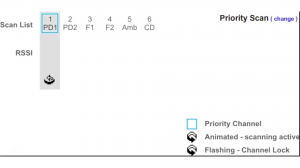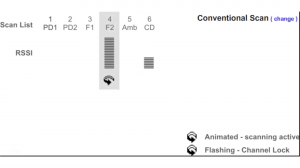Basic Radio Awareness
Communications Systems
How Scanning Works
Portable and mobile users are constantly on the move. When they work on a system with multiple repeaters in different locations, it can be difficult for the different units to keep in touch. One method is for each user to check the different channels by hand to see if there is any communication activity on the channel. An obvious problem here is that one may miss a call by being on the wrong channel at the wrong time.
A better way of doing this is a process called scanning. This enables the radio to automatically check each channel in turn, one after the other to see if there is any activity going on. If activity occurs, the radio will lock on to that channel and then send the audio to the speaker so that the radio user can hear it.
Scanning also allows users to monitor other channels for activity while talking on one. The group of available channels to scan through is called a scan group.
When a radio locks on to a channel during the scanning process, it is called capturing a channel. Scanning can be used for talking as well as listening, and there are several different ways to program the scanning capabilities.

A radio can be programmed to allow a user to press the PTT and then talk on the captured channel. Alternatively, it can be configured to return the user to a default channel for transmissions. Priority scanning can be configured on a radio to allow important channels to be scanned more frequently in order to capture important traffic ahead of time.
 Radio Academy
Radio Academy






